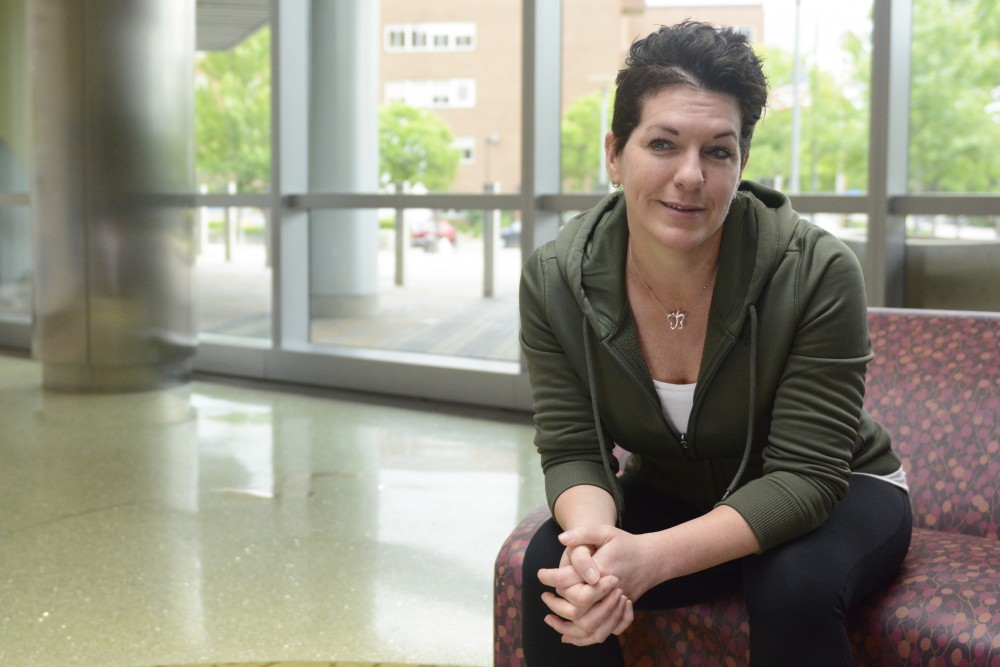Research by University of Minnesota doctors is helping patients with a blistering skin condition grow stronger through bone marrow transplants.
University researchers have been developing a new method since 2007 to treat Epidermolysis Bullosa, a disorder that causes theskin to tear at the slightest touch.
The approximately $500,000 treatment is only available at the University’s Masonic Children’s Hospital and is still in its clinical trial phase but has proved successful on multiple patients.
The therapy uses a bone marrow transplant, replacing dysfunctional stem cells in the patient’s body with functional ones helping to hold skin tissue together, said Jakub Tolar, the project’s lead and the executive vice dean of the University’s Medical School.
Seventeen-year-old Jonathan Pitre, Tolar’s latest patient who has a rare form of EB difficult to treat, is seeing the benefits of Tolar’s newest technique.
Although the treatment is not a cure, Pitre’s mother, Tina Boileau, said they believed the clinical trial is one of the few options left as Pitre’s EB worsened.
She said they view this treatment as a way to immediately improve Pitre’s quality of life while they wait for a cure.
“As strong as he wants to be and as strong as he is, at one point your body says, ‘I’ve had enough,’” Boileau said.
The Treatment
The treatment begins with a session of chemotherapy. This is followed by consecutive bone marrow transplants, a change from previous versions of the therapy that included only one bone marrow transplant.
Pitre’s treatment began in late March, and soon after he received a bone marrow transplant from Boileau, results showed his body accepting the transplant, Tolar said.
While this was a good sign, there was caution to celebrate because Pitre’s first attempt at the transplant in August showed him accepting the transplant only to reject the new cells later.
Last week, complications from the recent transplant brought Pitre to the operating room, said Sarah Anderson, a nurse working with Pitre at the University’s Masonic Children’s Hospital.
But, after fluctuations in Pitre’s cell levels, a test showed the new transplant was working and he was accepting 100 percent of Boileau’s donated cells.
Pitre has already shown improvements with a large wound on his back and several other smaller ones showing signs of rapid recovery.
Past patients of the treatment have recovered to the point where they can now ride roller coasters and attend school, two activities far removed from Pitre’s life today, Boileau said. She said she hopes Pitre can see this kind of improvement.
“You’d do everything for [Pitre] because you know he’d do the same for you,” Anderson said.
While the treatment has shown signs of great success, both Boileau and Tolar are cautiously optimistic.
It will be a year before the transplant can repair the damage done to Pitre’s body, and he still runs the risk of the donated cells attacking his own, Tolar said.
The Future
In the face of the therapy’s success thus far, Tolar warns against viewing it as a cure or miracle.
“It’s really not. You don’t have miracles in the kind of medicine that we practice,” Tolar said.
Boileau’s transplanted cells will not bring Pitre’s skin strength to normal levels, Tolar said, adding he would need to rewrite Pitre’s genetic code to fully cure him.
Tolar said he and his team are working on a promising gene editing procedure that would do just that, but are still waiting to start a clinical trial for it.
In the meantime, Tolar continues to tweak the current treatment, which he believes can be used to treat other genetic and cellular disorders as well as burn victims.
“You change a horrific, rapidly fatal disorder into one you can live with, and that’s phenomenal,” he said. “That’s what you do first, and then you build upon that.”

















